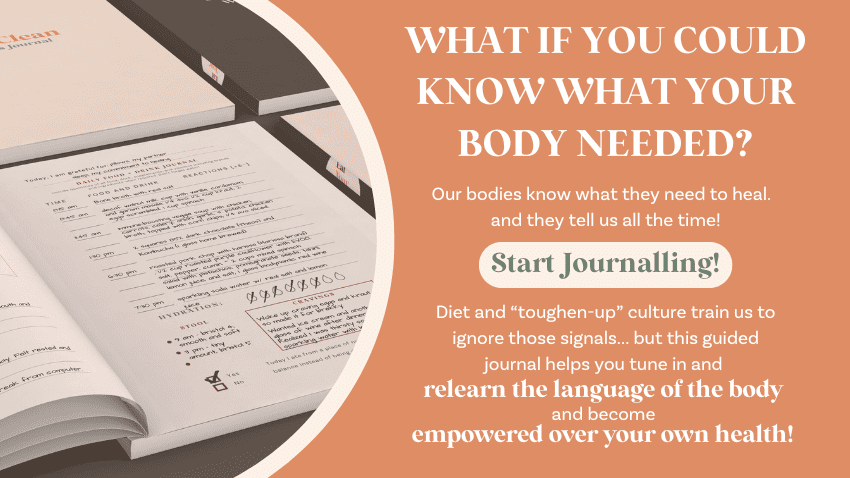Intuitive Eating is a non-diet approach to health and wellness that encourages humans to tune into their own bodies natural cues. It’s evidence-based and focuses on paying attention to natural hunger and satiety signals. The process helps you listen to more intricate body signals related to the types of food your body craves and reacts well to.
The goal of intuitive eating is to develop a healthy relationship with food and to become empowered to make more educated decisions that fit your unique needs.
Intuitive eating is a powerful approach to healthy eating that allows for bio-individuality, shifting needs, and flexibility for life’s ebbs and flows.
Here are some reasons to consider learning intuitive eating:
Escape Diet Culture
Say goodbye to diets, meal plans, and food rules, and embrace the idea that all foods can be enjoyed in moderation.
Intuitive eating means no more counting calories, macros, or grams of nutrients. Instead, you start to listen to your body and make micro-adjustments based on your feelings and intuition. It’s moving back to a connected experience of eating instead of a forced mathematical practice.
Learn to listen to your body
One of the most popular elements of intuitive eating is paying attention to your body’s hunger and fullness cues. In other words, eating when you’re hungry and stopping when you’re satisfied.
This can allow you to move away from restrictive diets, calorie counting, and other stressful dieting approaches.
However, the ability to tune into your hunger signals is really just the beginning. There are many more important signals the body sends. These can be related to inflammation, early warning signs of disease, and nutrient deficiencies.
Intuitive eating and the process of listening to your body can help you reach your goals, whether that’s weight loss, more energy, or healing a specific health issue.
This power over how you FEEL is the true power of intuitive eating and wellness.
As you start to tune into the language of your body, you can identify triggers and connect them to both positive and negative symptoms. This could be honing in on the causes of migraines or identifying what lifestyle hacks give you more energy and have a positive affect.
After a while, you can start to prioritize these learnings in a prioritization matrix for change.
Honor your cravings
Cravings are the body’s way of telling you what it needs.
They can let you know if you need fiber, if you’re thirsty, and if you need protein or fat. Certain cravings can even give you insight into specific nutrient deficiencies, for example craving beef when needing iron and craving chocolate when needing magnesium.
Allow yourself to eat the foods you crave, and avoid the guilt and shame often associated with eating certain foods.
You must also pay attention to false cravings. When the gut has dysbiosis, pathogenic or invasive organisms can trigger cravings that aren’t good for you. These typically show up as sugar and carb cravings.
Part of the journey will be listening to the cravings and trying to understand the healthy need beneath that craving.
Practice mindfulness
Focus on the experience of eating, including the flavors, textures, and aromas of the food, to enhance your enjoyment and satisfaction.
Not only will this make the experience of eating more pleasurable, it allows you to feel more satisfied and contented with your food because you are present and paying attention to the experience of eating.
Additionally, being mindful and at rest before eating activates the parasympathetic nervous system which improves digestion and overall health.
Here are some steps to get started with intuitive eating:
Begin journaling your experiences to draw connections
One of the easiest and most affordable ways to learn the language of the body and begin intuitive eating is to journal your nutrition and lifestyle. But it’s important to do this in an intentional way that evaluates connections between inputs and experiences.
This isn’t macro or calorie counting and therefore the journaling needs to be more holistic in nature.
A guided wellness journal can jumpstart your journey
A wellness journal can be a helpful tool in learning the language of your body and practicing intuitive eating.
Here are a few ways you could use a workbook or journal for intuitive eating:
- Track lifestyle habits: Writing down sleep, stress, movement, and other lifestyle habits can help build connections and links between life events and eating patterns. The body and mind are connected and have a large impact on one another.
- Track hunger and fullness levels: Write down when you eat and how hungry or full you felt before and after each meal. This can help you identify patterns and become more aware of your body’s hunger and fullness signals.
- Reflect on your emotions and thoughts around food: Write down any thoughts or emotions that came up before, during, or after eating. This can help you become more aware of the role emotions play in your eating habits.
- Record non-hungry eating triggers: Write down what triggered you to eat when you weren’t hungry, such as stress, boredom, or emotions. Over time, you can work to identify patterns and find alternative ways to cope with these triggers. Were these foods that worsened those triggers or gave you true and lasting relief?
- Reflect on links between diet and lifestyle and your overall well-being: Intuitive eating is a facet of holistic wellness. The practice acknowledges the interconnectedness between all aspects of life. The wellness journal can be a helpful tool to draw connections.
- Celebrate your successes: Write down any small victories or progress you’ve made in your journey towards intuitive eating, such as allowing yourself to eat a food you used to restrict, or listening to your body and stopping eating when you’re full.

Which wellness journal works best?
After many years of working with clients to learn about their unique needs, I’ve created a journal template that guides you through each of the key lifestyle factors that impact and are affected by intuitive eating.
The guided journal prompts you to reflect on nutrition, sleep, mood, movement, stress, and stool. The journal was curated based on the evidence-based approaches with the highest impact on your overall wellness and designed based on those areas’ ability to teach you the language of your body.
It’s also crafted to narrow in on the most important things to track so you aren’t writing too much about too little.
You can now get your own copy of the journal and start making those connections.
What are the downsides to intuitive eating?
There is no single playbook that works for everyone, which can be frustrating when you’re starting out.
This means you’ll have to work at learning your body’s unique cues and needs and figuring out how to write your own healthy eating playbook. You won’t be able to take shortcuts and play by someone else’s rules.
But that’s also the point!
Intuitive eating will be different for everyone because we are all biologically unique
Every single individual has a different combination of genes, environmental exposures, nutritional and health history, and lifestyle expectations. The combination of those things creates your unique experience and that experience warrants an individual eating strategy.
The work of intuitive eating is learning to build that plan.
And it won’t always be the same. Your needs pivot with stress, exercise, your monthly cycle, and more.
The upside is that, once you master intuitive eating, you will always be able to listen to your body and adjust accordingly!
Seek support from experts and coaches
Nutrition and health coaches can get you there faster
It can take a long time to make connections between nutrition, lifestyle, and your overall feelings of health and wellness.
Nutrition and health coaches are practiced at seeing those connections and speeding up the process for you.

Yes, you can totally do it yourself!
But it might take a lot more time. In addition to journaling and writing down your experiences, you’ll likely need to research the health impacts of different foods to see what might be triggering your specific symptoms.
If that’s the route for you, here are some resources to help you gain a deeper knowledge of how ingredients impact your body
- What is clean eating
- How to get started with healthy living
- Nutrition books
- Intuitive Eating Foundation
What if I want to get results faster?
If you’re curious about working with a health coach to expedite this process, sign up for a free 15-minute call to talk through what it would look like and if it’s a good fit for you.
Build a support network
Learning a new way of living takes hard work. You’ll have to pay closer attention to things you never noticed before. You may also have to intentionally change your habits and default reactions
Find a supportive community, whether it be friends, family, or a therapist, who can help you navigate the challenges of this undertaking and provide encouragement along the way.
Remember, the process of intuitive eating is about personal discovery and can take time.
Be patient with yourself and celebrate each small step towards a healthier and happier relationship with food.
What are the top 10 principles of intuitive eating?
Intuitive eating is a holistic approach to eating that emphasizes developing a healthy relationship with food and your body. The main goal is to tune in to your body’s cues, and eat in response to these signals, rather than following external rules or restrictions.
Here’s a summary of the key principles of intuitive eating:
- Ditch the diet mentality: This means letting go of any external rules or expectations about what, when, and how much to eat. Instead, focus on listening to your body and its hunger and fullness signals. This doesn’t mean fearing restriction, but rather truly understanding your own needs and making educated decisions about restriction.
- Honor your hunger: This means eating when you’re hungry, and not waiting until you’re starving. Eating regularly can help prevent overeating later on.
- Make peace with food: All foods are acceptable, and no foods are forbidden. This means avoiding the label of “good” and “bad” foods. Instead, focus on “good” and “bad” ingredients. Quality matters most.
- Challenge your inner food police: This means becoming aware of the negative thoughts and beliefs you have about food, and working to change them if apprporiate.
- Respect your fullness: Pay attention to your body’s signals of fullness, and stop eating when you’re satisfied. Sometimes this requires learning to slow down which also helps improve digestion.
- Enjoy your food: Take time to savor your food and focus on the experience of eating, rather than eating quickly or mindlessly.
- Honor your feelings without using food: This means finding alternative ways to cope with emotions and stress, rather than turning to food.
- Respect your body: Treat your body with kindness and respect, and work towards body acceptance rather than constantly striving for perfection.
- Exercise: Physical activity should be enjoyable, rather than a means to burn calories or control weight. Sometimes rest and intentional movement are best for your health and you’ll have to learn to listen to your body about what it needs.
- Honor your health: This means making choices that support both physical and mental well-being, rather than just focusing on weight loss.
Intuitive eating takes time and patience to master, but by listening to your body and giving yourself permission to eat in response to your body’s cues, you can develop a healthier relationship with food and your body.
What are the best books to learn more about intuitive eating?
- Eat Your Way Clean Wellness Journal: An active guide that instructs on the importance and evidence behind intuitive eating while guiding you through the process of implementing intuitive eating
- The Body Keeps the Score: The mind and body are intricately connected. This book speaks to the physical symptoms of mental stress and the importance of lifestyle on intuitive wellness and holistic health.
- Intuitive Eating: One of the original books and sources on intuitive eating, this book focuses on breaking free from diet culture.








